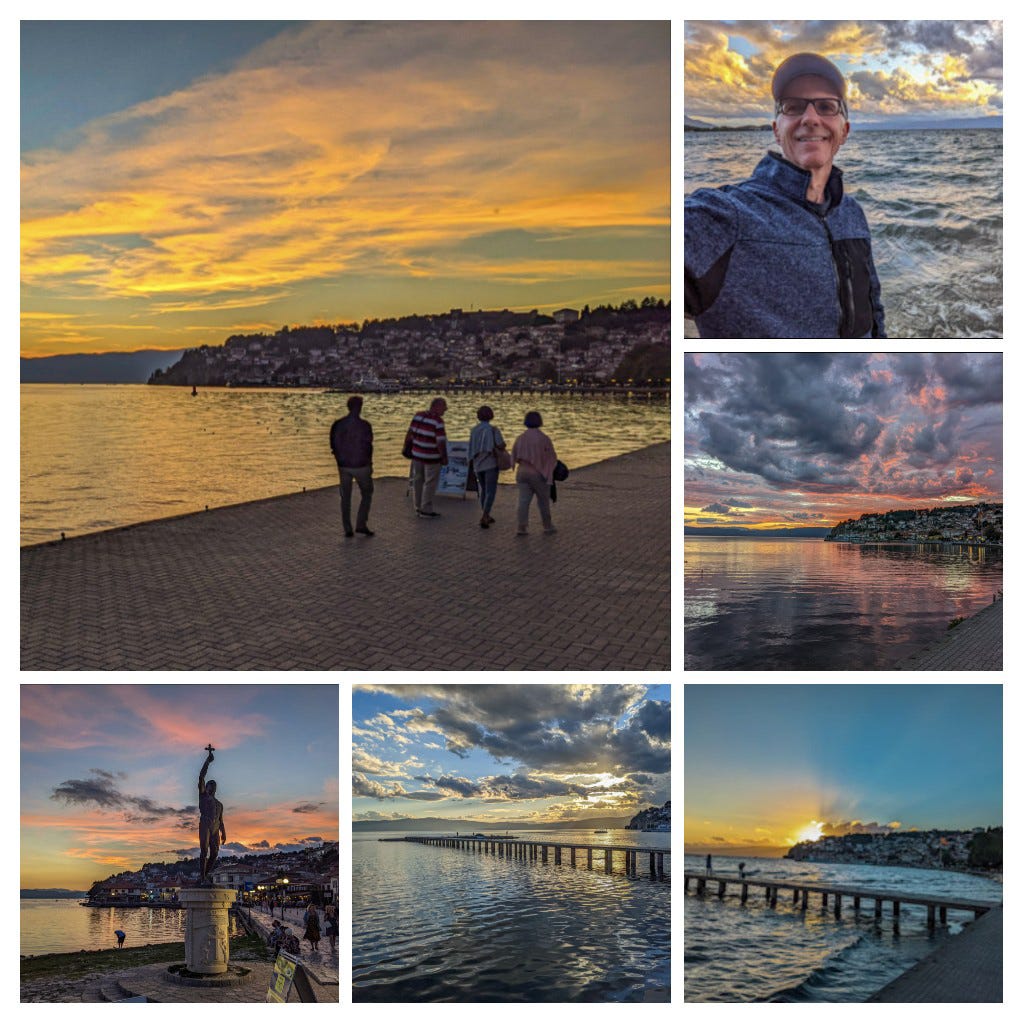Seven Surprising Things About Ohrid, North Macedonia
This lakeside town is such a perfect travel gem that we're reluctant to write about it. Please don't ruin it with overtourism!
Brent and I spent just a month in Ohrid, North Macedonia, on Lake Ohrid.
Which, prior to three months ago, we’d never even heard of.
According to an informal poll I did on social media, most Americans have never heard of Lake Ohrid. In 2019, only 18,000 Americans visited this country all year.
It’s more well-known in Western Europe, but it’s still pretty far off the usual tourist path.
And now we’re reluctant to tell people about it.
Right now, Ohrid feels like it occupies a sort of perfect travel sweet spot.
It’s stunningly beautiful.
It has all of the comforts and amenities any Western visitor could want.
It’s extremely affordable.
And it’s not overrun by tourists.
But it won’t stay this way forever, especially if travel writers like us write newsletters promoting the hell out of it.
That said, Macedonia is still a very poor country, and almost every local we spoke with wants more tourists, not fewer, to help the struggling economy.
So, while we acknowledge that overtourism is an important — if complicated — topic, we ultimately feel okay sharing details about this lesser-known travel gem.
Here are seven surprising things about the place.
1) The lake is gorgeous!
Given that we only learned of Lake Ohrid shortly before arriving here, we had no idea what to expect.
We found sparkling blue water, green hills, and in Ohrid, a ridiculously charming waterfront area.
Lake Ohrid is a “rift valley” lake, which means it was formed by tectonics pulling two areas of land apart. These lakes tend to be very old, and Lake Ohrid clocks in at somewhere between four and ten million years. It’s also among the deeper lakes in Europe, reaching a maximum depth of 288 m (945 ft).
I don’t know if we were just lucky, or if the skies over Lake Ohrid are always so dramatic, but the sunsets were some of the most fantastic we’ve ever seen.
But there is one sour, lake-related note. The town of Ohrid and the lake itself are both UNESCO World Heritage Sites, but UNESCO is threatening to revoke that status because Macedonia is not doing enough to protect either Ohrid’s Old Town or the ecology of the lake.
One of the worst problems is the Ohrid trout, which is being fished to the brink of extinction. While here, do not order it at any restaurant that serves it — as commercial fishing for Ohrid trout is supposed to be illegal.
2) Let me repeat: Ohrid’s waterfront is fantastic.
The town of Ohrid is nestled along the northeastern shore of Lake Ohrid, tucked between two headlands. And connecting those headlands is a lovely waterfront.
But don’t just take my word for it. How about a two-minute speeded walking tour?
Starting at the southern edge of town, you can walk from lush and lovely Dutch Park, along the tree and bench-lined esplanade that curves along the shore before depositing you at Ohrid City Park. The proudly displayed Macedonian flag marks the halfway point of the waterfront.
Along the way you can eat fresh-roasted corn or palačinka (a kind of crepe), or walk out onto the pier for gorgeous views of Ohrid.
From there, the waterfront runs directly alongside the bottom of Ohrid Hill and through the lower part of the Varosh neighborhood. After you pass through Lower Gate Square there’s a plethora of charming restaurants built right up to the edge of the lake with absolutely stunning views (and surprisingly good food!).
Believe it or not, it gets even better from there. The Ohrid Boardwalk lets you walk right over the lake as it hugs the bottom of the cliffs, taking you past several admittedly rocky beaches that are quite popular in hot weather.
And at the end of the walk, you round a point and you’re looking up at this:
That’s the Church of Saint John the Theologian, arguably the most famous and photographed spot in all of Macedonia.
Which brings us to…
Keep reading with a 7-day free trial
Subscribe to Brent and Michael Are Going Places to keep reading this post and get 7 days of free access to the full post archives.






